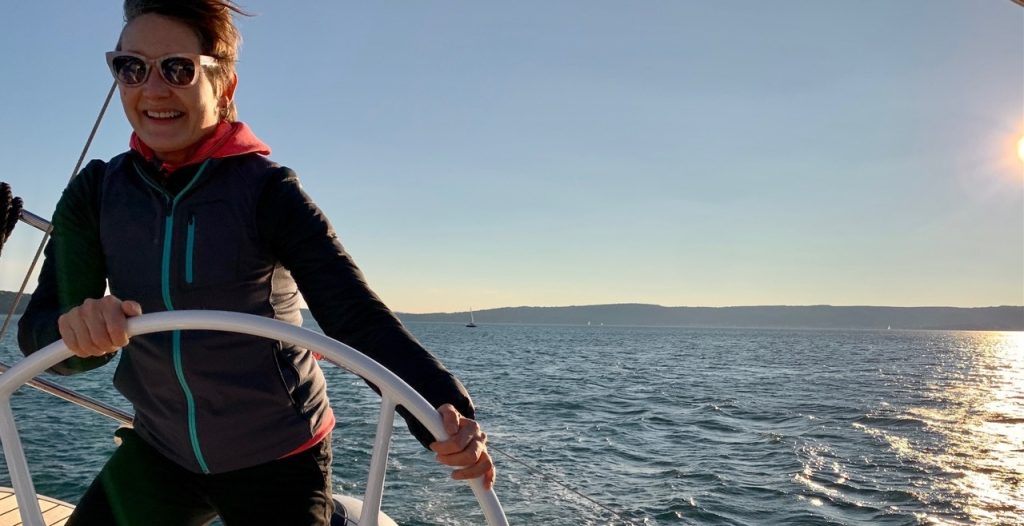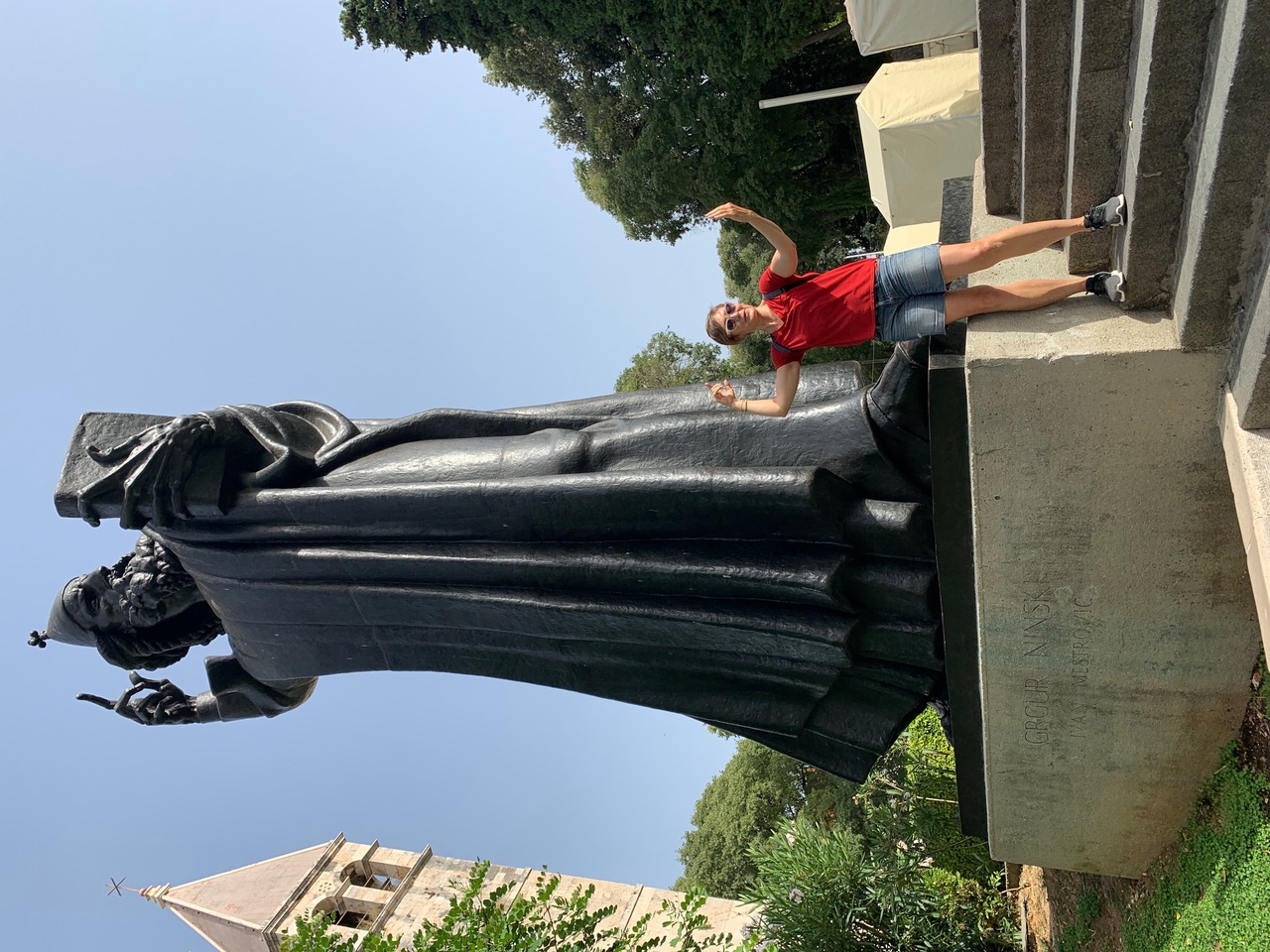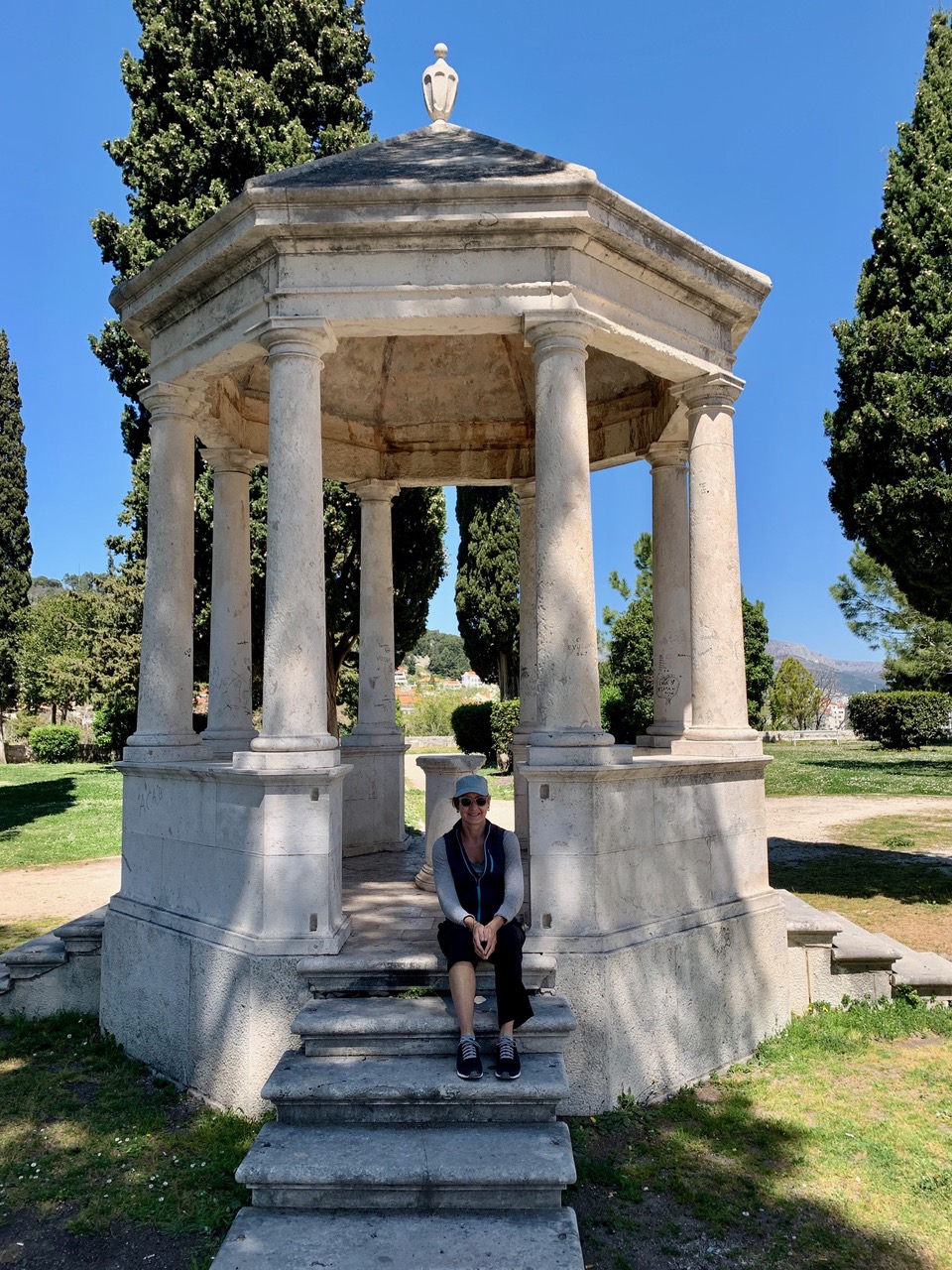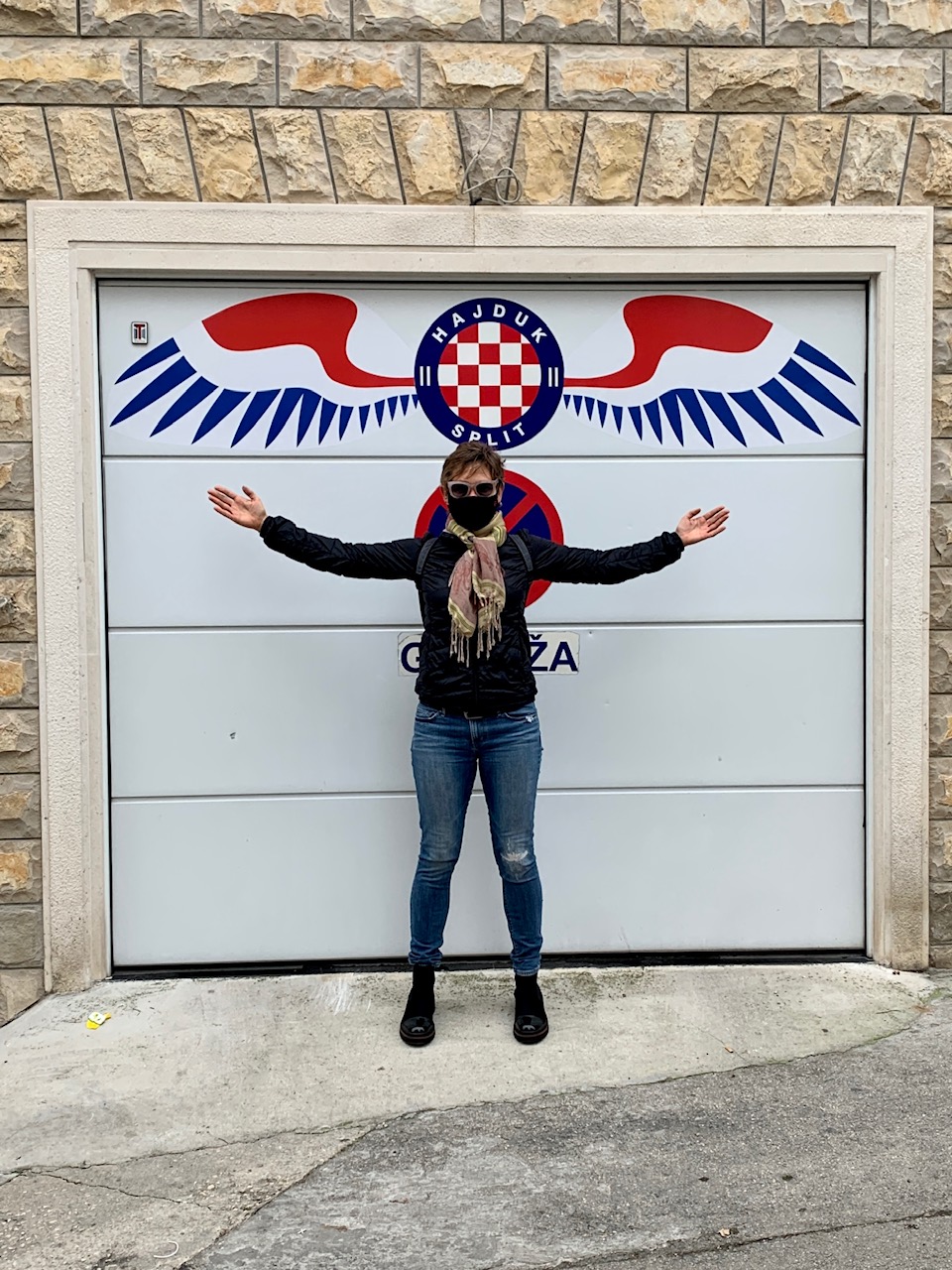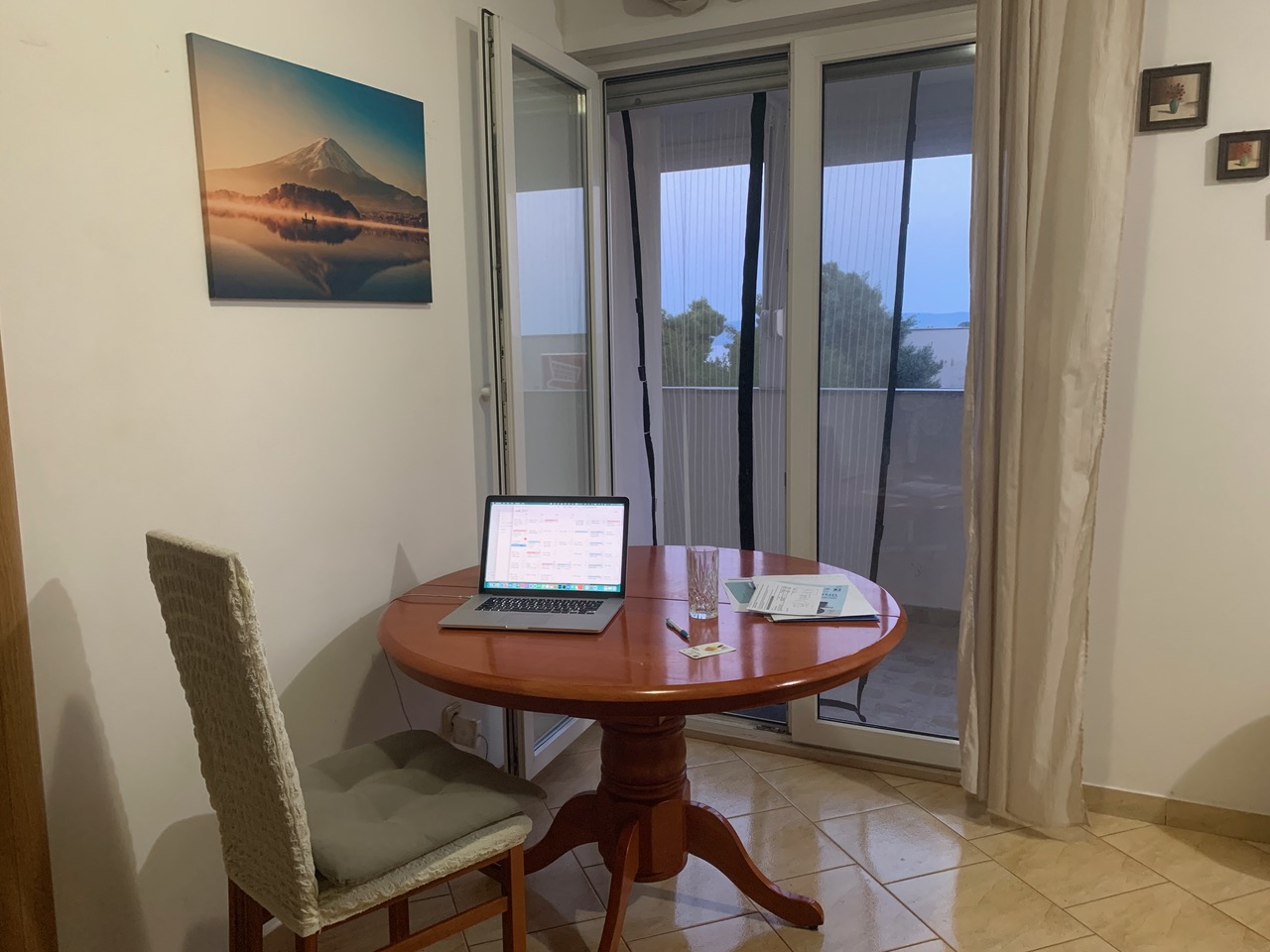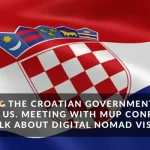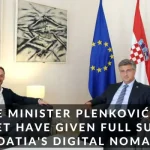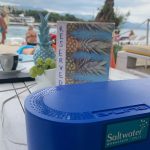Meet one more successful applicant for the Croatian digital nomad permit – TCN’s very own contributor Cyndie Burkhardt, who came to Croatia for a month almost 18 months ago and doesn’t look as though she is leaving any time soon.
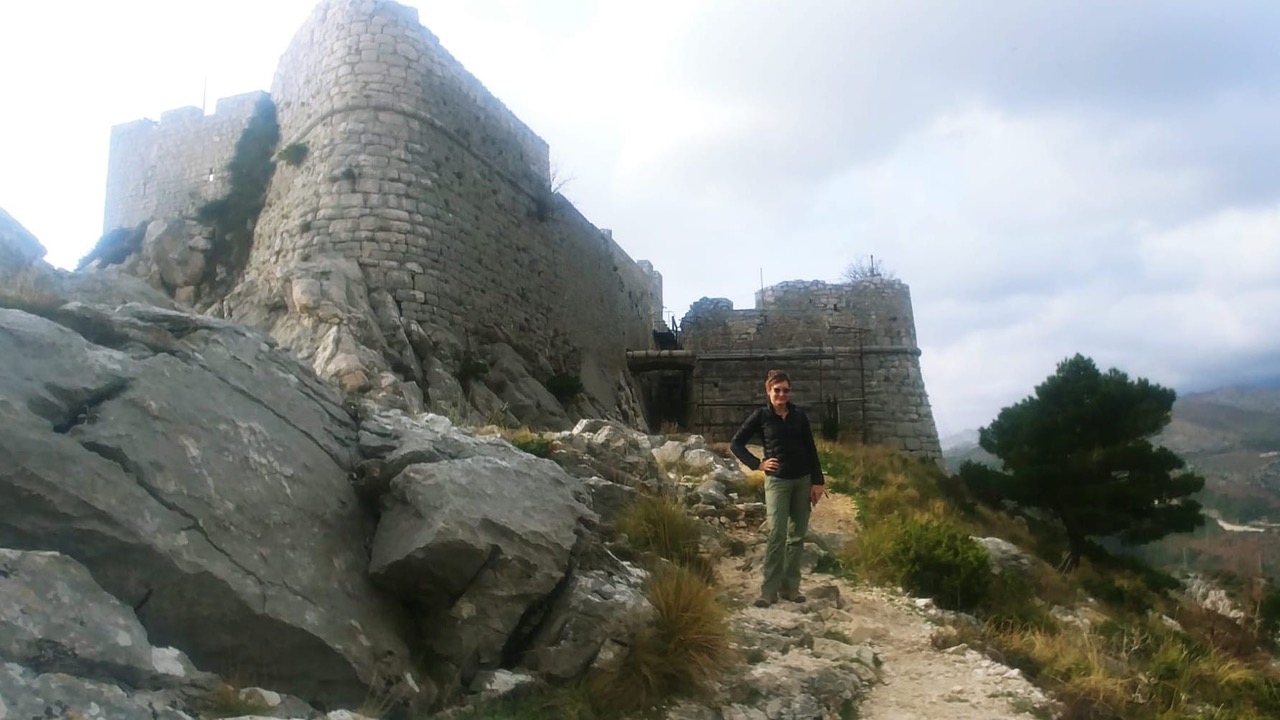
(Hiking to Starigrad Fortress, a 15th-century fortress located near Omiš in Split-Dalmatia county, Croatia.)
1. Tell us firstly a little about yourself and why you decided to come to Croatia?
I arrived in Split, Croatia on March 1, 2020—a year and a half ago. I was traveling around the world on a “12 countries in 12 months” trip to learn about health and wellness practices in different cultures. Within two weeks, the pandemic grounded my trip; I was in my 9th month. Croatia responded quickly and well to covid-19 restrictions and it seemed safe here, so I decided to stay.
(Sitting in the Iron Throne from Game of Thrones, on Lokrum Island, near Dubrovnik, Croatia.)
2. You are the latest recipient of the digital nomad permit here in Croatia – congratulations? Tell us why you decided to apply for it and how long the process took?
The digital nomad permit didn’t exist in Croatia when I first got here and when it was announced, it seemed like a great way to extend my stay in this beautiful country and set down some roots while I build my business. The process took nearly three months.
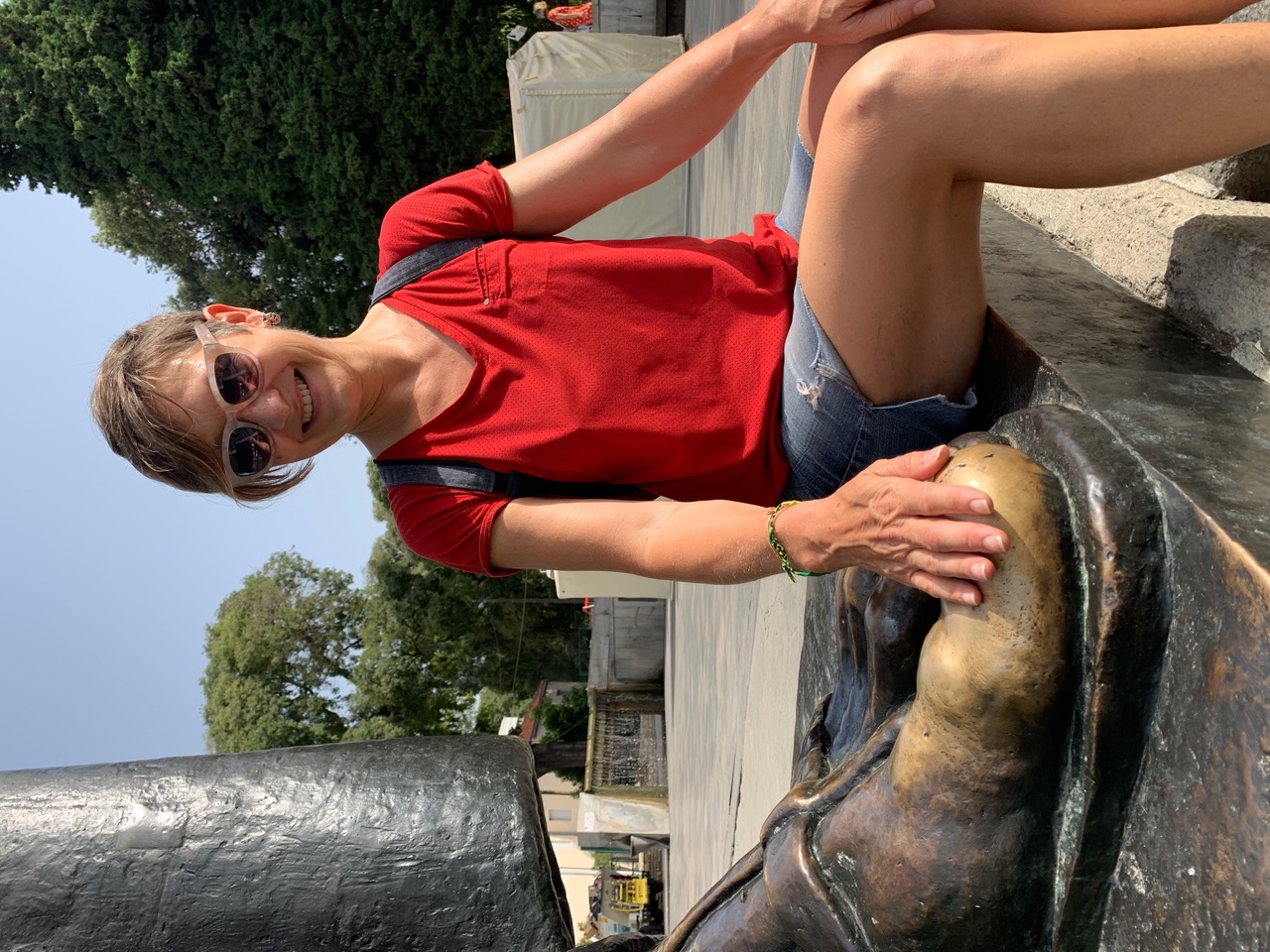
(Medieval Bishop Grgur Ninski defied the Catholic church in Rome and introduced the Croatian language into religious services so that worshippers would better understand the word of God. Rubbing the statue’s big toe is said to bring good luck, Diocletian’s Palace, Split, Croatia.)
3. There are not so many documented stories online of successful applications. Can you take us through the process?
It was pretty straightforward. I went to my local police station in Split to confirm what documents I needed, got those together, and submitted them directly to that station via email, as instructed.
(Croatian sculptor Ivan Meštrović created the 28-foot bronze statue of Bishop Grgur Ninski that stands at Diocletian’s Palace in the Old Town of Split, just outside the Golden Gate, Split, Croatia.)
4. What was the most stressful part, and what recommendations do you have to improve the system?
Getting information on the status of my application was stressful. Some people at the police station are helpful but some behind the scenes are not responsive or friendly. Few answer the phone and if they don’t speak English, they simply hang up on you. It’s maddening.
(Resting after a bike ride in the pavilion in Sustipan Park, a small peninsula in the southwestern part of Split, Croatia.)
5. What does the 12-month permit mean to you personally? How will change your life and short-term plans?
I have to be honest, it feels pretty cool to be among the first “official” digital nomads to hold this distinction! And now that I’ll be here, I hope to see more of this country and the region with no travel restrictions.
Staying here means I can feel settled about my living situation while I focus on building my health and nutrition business. I also look forward to getting involved in the community and meeting more people, and possibly collaborating on work/projects.
(Posing as a Hajduk Split angel. This beloved Croatian professional football club is based in Split and team support is fervent. Public wall art can be seen throughout Dalmatia, Croatia.)
6. You have already spent a good amount of time in Croatia as a digital nomad. How do you rate the experience so far? What are the highlights?
The expat community is one highlight. It’s a large and diverse group that includes people from different countries and also those with Croatian roots. This is a good place to land because you have the Adriatic Sea, nice weather, and the cost of living is decent, although I wouldn’t call it cheap. I absolutely love how much fresh food grows here and how resourceful Croatians are at making different products from their natural resources, including delicious food; herbs; olive oil; wine and rakija; beauty products; soaps; essential oils, and more.
(A dining room table doubles as home office and “international command center,” Split, Croatia.)
7. What are the key factors Croatia needs to focus on to become more attractive to digital nomads?
I don’t know about the rest of the country, but in Split there could be more/affordable co-working spaces, that’s the one thing I’m missing. Also, while a lot of people here speak English, services could be more accessible in English, such as people working at the police station who are responsible for processing applications, or at least communicating with nomads. This extends to websites also.
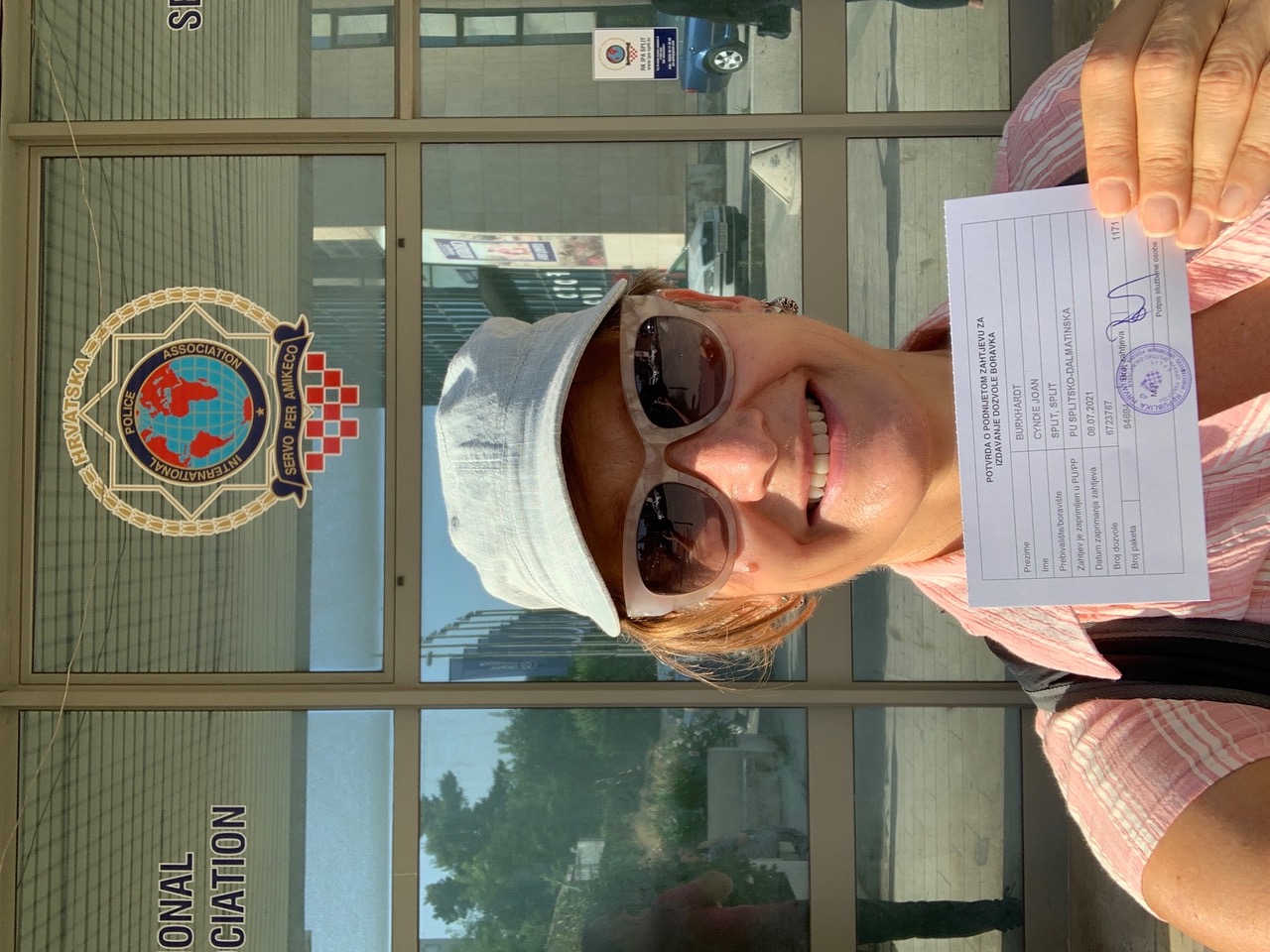
(Croatia’s proudest and newest digital nomad resident; at the police station, where immigration applications are processed, Split, Croatia.)
Learn more at TCN’s Digital Nomads channel.
Story and photographs ©2020, Cyndie Burkhardt. https://photo-diaries.com
For more of Cyndie’s experiences, check out her Croatia Through the Eyes of a Digital Nomad column.

